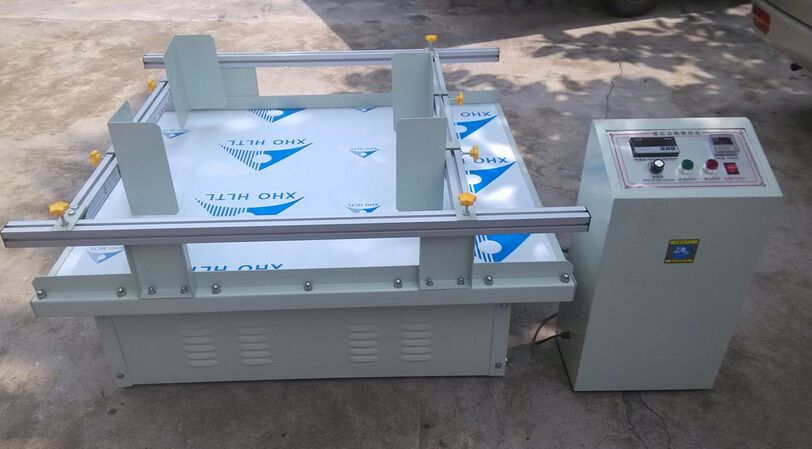ASTM D999-24 Vibration Resistance Test for Flexible Packages
The ASTM D999-24 vibration resistance test is a critical evaluation process used to assess the durability of flexible packaging materials under controlled vibratory conditions. This testing ensures that packages can withstand the rigors of transport and handling without compromising their integrity or performance. The test is particularly relevant for industries such as food, pharmaceuticals, and electronics, where product safety and quality are paramount.
The ASTM D999-24 standard provides a framework for evaluating the resistance to vibration of flexible packages intended for use in transportation environments. The test simulates real-world conditions that packaging may encounter during shipping, handling, and storage. By subjecting the package to specific vibration parameters, the tester can determine whether the product will maintain its integrity under these stresses.
The primary purpose of this test is to ensure that flexible packages meet regulatory requirements and customer expectations regarding their ability to protect contents during transit. The results provide valuable data for quality managers and R&D engineers to optimize packaging design and material selection, ensuring robust performance in challenging environments.
During the testing process, specimens are subjected to a series of controlled vibration cycles designed to mimic the conditions they might encounter during transport. The test parameters include frequency, amplitude, and duration, which are carefully specified according to ASTM D999-24. Compliance with these standards ensures that the packaging meets industry benchmarks for reliability and safety.
The results of the ASTM D999-24 vibration resistance test provide crucial insights into the performance characteristics of flexible packages. These data help quality managers, compliance officers, R&D engineers, and procurement personnel make informed decisions about material selection and design improvements. By adhering to this standard, manufacturers can enhance product safety, reduce waste, and meet regulatory requirements.
| Parameter | Description |
|---|---|
| Vibration Frequency Range | 30 Hz - 200 Hz (optional) |
| Vibration Amplitude | 1.5 g peak-to-peak |
| Vibration Duration | 6 hours or as specified in the test plan |
| Test Specimen | Representative samples of flexible packages |
The ASTM D999-24 standard is widely recognized for its stringent requirements and rigorous testing protocols. Compliance with this standard ensures that packaging materials are robust enough to withstand the rigors of transportation, thereby protecting the integrity of the contents during transit.
Applied Standards
The ASTM D999-24 vibration resistance test is based on international standards that have been developed by recognized bodies such as ASTM International. This standard ensures consistency and reliability in testing procedures, which are essential for ensuring the accuracy of results.
- ASTM D999-24: Standard Test Method for Vibration Resistance of Flexible Packaging.
- ISO 16739:2018: Environmental Stress Testing of Packagings - Particular Conditions for Vibration Tests.
The application of these standards ensures that the testing process is both consistent and accurate, providing reliable data to support packaging design and quality assurance efforts. Compliance with ASTM D999-24 is often a requirement in the aerospace, automotive, and food industries, where product safety and integrity are critical.
Scope and Methodology
The scope of the ASTM D999-24 vibration resistance test encompasses the evaluation of flexible packaging materials under controlled vibratory conditions. The methodology involves subjecting specimens to specified frequency, amplitude, and duration parameters designed to simulate real-world transport conditions.
| Test Specimen | Testing Conditions | Acceptance Criteria |
|---|---|---|
| Flexible packaging samples | Vibration frequency: 30 Hz - 200 Hz, Vibration amplitude: 1.5 g peak-to-peak, Duration: 6 hours or as specified in the test plan. | No visible damage to the package after testing; contents remain undamaged. |
The test procedure involves placing the specimen on a vibration table and exposing it to the specified parameters. The tester carefully monitors the specimen's response during the test, noting any signs of damage or degradation. After completion of the test, the package is inspected for any visible signs of failure. Acceptance criteria include no visible damage to the package and undamaged contents.
The ASTM D999-24 vibration resistance test is essential for ensuring that flexible packages meet industry standards for durability and reliability. By subjecting specimens to controlled vibratory conditions, testers can identify potential weaknesses in packaging design and material selection, allowing for improvements before product release.
Quality and Reliability Assurance
- Consistency: The test ensures consistent results across multiple specimens, providing reliable data for quality control.
- Precision: The controlled environment of the vibration table allows precise measurement of package response to vibration.
- Repeatability: Repeated tests under identical conditions provide repeatable results, enhancing confidence in packaging performance.
- Data Accuracy: Rigorous adherence to ASTM D999-24 ensures accurate and consistent data for decision-making.
The quality assurance process includes regular calibration of test equipment, training of personnel, and strict adherence to standard operating procedures. These measures ensure that the test results are reliable and can be trusted by clients and regulatory bodies alike.





